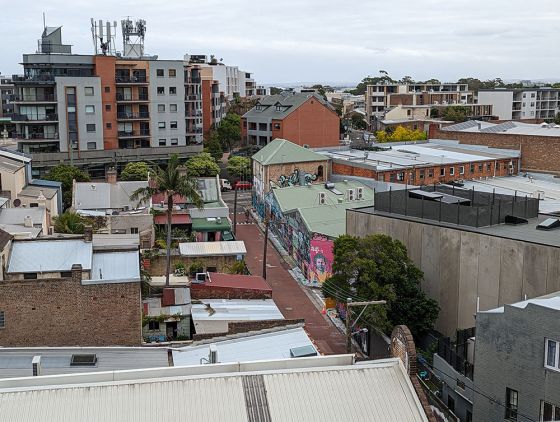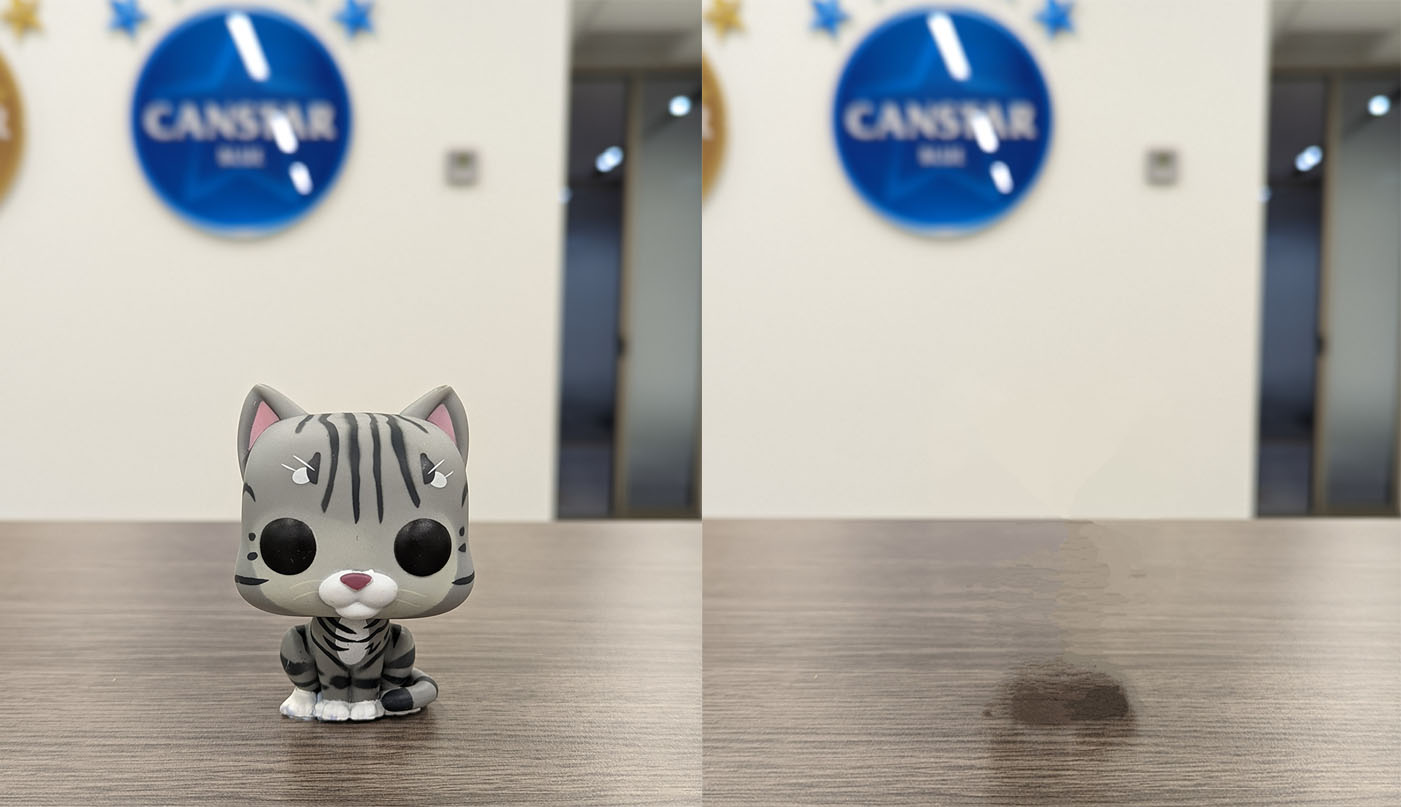It’s been a banner year for smartphones, and Google’s flagship Pixel 6 Pro is no exception: a step up from last year’s Pixel 5, the 6 Pro is, at first glance, a premium device that screams quality. On paper, the Pixel 6 Pro ticks all the boxes, with the promise of all-day battery, an upgraded triple camera setup, and the new Google Tensor processor.
Launched at the tail end of 2021, the Pixel 6 and Pixel 6 Pro series is one of this year’s most anticipated phone ranges, with a slick design that sets it apart from major competitors including the Samsung Galaxy S21. The larger Pixel 6 Pro is also the first smartphone released in Australia that’s compatible with ultrafast mmWave 5G (which I’ve already tested out — more on this later!).
If you’re looking for the right mix of style and substance, the Google Pixel 6 Pro has likely caught your eye. So to see if the real-world experience matches the hype, I’ve taken the $1,299 device for a lengthy test drive. Read our Google Pixel 6 Pro review for all the details on the phone’s features, cameras, battery, and performance.
Google Pixel 6 Pro: key features and specs
![]()
Here are some of the features and specifications of the Google Pixel 6 Pro:
- Priced from $1,299 (also available on plans from Telstra, Optus and Vodafone)
- 6.7-inch QHD display with 120Hz refresh rate
- 50-megapixel wide angle, 12-megapixel ultra-wide, and 48-megapixel telephoto rear cameras
- 11.1-megapixel front camera
- Android 12 operating system
- Google Tensor processor with Titan M2 security
- 5,000mAh battery with fast wireless charging and Battery Share
- IP68 water and dust resistance
- 5G connectivity
- Available in 128GB, 256GB and 512GB storage sizes
| Google Pixel 6 Pro Pros | Google Pixel 6 Pro Cons |
|---|---|
|
|
Jump to:
- Design and functionality
- Performance
- Cameras
- Should I buy the Google Pixel 6 Pro?
- Compare Google Pixel 6 Pro plans
Design and Functionality
![]()
The Pixel 6 Pro marks a fresh new look for the Pixel line, with Google ditching the forgettable and somewhat dull design found in the Pixel 5 in favour of a sleek Gorilla Glass 6 finish. With so many manufacturers still churning out a standard ‘cameras on the top left’ template for smartphones, seeing something a little different from the Pixel 6 Pro — which sports a wide, horizontal black band across the rear to house its triple cameras — feels like a novelty.
Canstar Blue received the 6 Pro in Cloudy White, featuring a mostly-white glass rear, with an off-white contrast above the protruding black camera bar. It’s a glossy, attractive colour and adds a serious element of class to the Pixel range — there’s no mistaking that this is a high-end smartphone. While Google claims that its screen and back are scratch-resistant, you’ll likely want to invest in a case to protect your device, particularly as the smooth finish does make the phone a little slippery. That slick feel, combined with the phone’s weight and size, can make it a little awkward to hold and grip if you’re used to smaller, lighter devices.
The Pro features a silver alloy frame, with bottom stereo speakers, a USB-C port, and power and volume buttons positioned on the top right side. The design of the power and volume controls could be irritating; being more used to those features sitting on separate sides, I frequently pressed the volume button instead of the power, and vice-versa. However, I eventually got used to the design, and even found that having the two major buttons in close proximity can actually make one-handed use easier.
The Pixel 6 Pro’s 6.7-inch screen is big and bright, with a dynamic refresh rate of up to 120Hz. The phone can automatically adjust the refresh rate between 10Hz and the full 120Hz, meaning you get the best of both worlds: smooth-as-silk scrolling and gaming where needed, and energy conservation for apps and activities where a faster rate isn’t required.
With good colour saturation that pays off in video and when browsing through Instagram, the 6 Pro is a great phone for watching HD media. The device is worth considering if you’re looking for a phone to get you through the daily commute: the screen offers both the size and the vibrancy to do most TV and movies justice when you need to catch up on the go. While it’s not quite as good in direct sunlight as the iPhone 13 Pro, Google’s premium phone offers excellent visuals, and the stereo speakers deliver surprisingly strong sound, even without headphones or a Bluetooth speaker.
Performance and battery
Google is making serious claims about the resilience of the Pixel, thanks to its specially-designed Titan M2 chip which works in tandem with its Tensor processor to keep your data locked-down. But one of the biggest complaints so far from many Pixel 6 Pro users has been the lack of facial recognition unlocking, and the glitchiness of the fingerprint sensor. Google has moved the fingerprint reader from the rear of the device to under the front display, and it seems this re-positioning has left the feature inconsistent.
Interestingly, my experience with fingerprint unlock has been positive; I haven’t really noticed the slow response times or unreliable scanning reported by other reviewers and phone owners, but I also don’t rely on my device for all my contactless payments. While the option of face unlock would have been a nice inclusion, fingerprint and passcode security are enough to get the job done. In good news, Google is working to address the lag with ongoing software improvements, including the most recent December 13 update.
Otherwise, the Pixel 6 Pro’s performance is excellent, and the new Tensor processor makes the device a joy to use, even for intensive activities such as gaming. Switching between apps and activities is virtually seamless, and the fast refresh rate keeps any kind of visual latency in games and apps to a minimum. Even during heavy multi-tasking, the 6 Pro kept things fast and flawless, without any crashes, slow response times or frozen screens.
The phone also includes some excellent AI, and convenient features such as Google Assistant voice typing. Probably the most exciting new tool is Live Translate, which instantly translates both audio and text from one supported language to another. I only tried out the feature through text, but I can already tell this will be a game-changer for travelling (and a great extra help for those of us learning a new language).
A fast phone needs some heavy-duty juice under the hood, and the Pixel 6 Pro includes a 5,000mAh battery, which Google has paired with Extreme Battery Saver for days when you need a long-lasting performance. The battery capacity is on par with similar heavyweight phones such as the Samsung Galaxy S21 Ultra, and is a big improvement on the Google Pixel 5, which packed 4,000mAh.
I found battery life to be decent, although heavier users will want to take advantage of the included power-saving features and the device’s fast charging compatibility. A high-definition Netflix streaming test saw the battery depleted by 9% in around 55 minutes, which is a little disappointing considering the 5,000mAh capacity. Standby battery life is good, but if you’re planning on using the Pixel 6 Pro’s vibrant screen for frequent streaming and social media, you’ll probably want to consider switching on extras such as Adaptive Battery and Battery Saver to get you through a full day.
The Google Pixel 6 Pro is the first smartphone to launch in Australia with support for mmWave 5G — a high-frequency version of 5G that’s designed to supercharge your speeds across short distances. While mmWave isn’t yet available to most Aussies, I did test the Pixel 6 Pro with the newly-switched-on Telstra mmWave now live in the telco’s Sydney CBD offices. Using the Ookla speed test app, the new Pixel hit speeds of 3,194Mbps. That’s over three gigabits per second, although this is definitely faster than what most Pixel users will achieve with the 5G coverage currently available at home.
Related: iPhone 13 Pro review: the most noticeable upgrade in an iPhone
Cameras
Google has upgraded the Pixel Pro’s camera line-up, offering what it calls ‘best in class computational photography’ combined with three professional-level lenses in back. The combination of the Pixel 6 Pro’s specially-designed processor and software, plus the premium flagship camera package, promises excellent results and a variety of photography options for both amateur and seasoned camera phone enthusiasts.

Google has included three lens in the rear: 50-megapixel wide angle, 48-megapixel telephoto, and 12-megapixel ultra-wide cameras, giving users a wide range of options and features to play around with. The telephoto lens offers 4x optical zoom, plus up to 40x Super Res Zoom for when you’re shooting from a distance. Zoomed-in photos generally retain clarity and detail, and despite the bevy of included editing features, you’ll likely be satisfied with shots without the need for post-snap adjustments.

The powerful Tensor processor also gives the Pixel range some seriously strong processing capabilities. Motion Mode allows you to highlight moving objects such as cars or pets in a single shot, which is ideal for sports, concerts, or any setting where you’d normally struggle to capture the action without blur. Magic Eraser is also a fun feature that lets you remove unwanted objects, such as background photobombers, from your photos with a quick tap or swipe, albeit with varying results.

Portrait Mode produces images that appear quite sharp on-screen, although tend to soften after processing and uploading. Like similar background-blurring modes found on competing premium phones, Portrait Mode can be a little hit-and-miss in figuring out which subject you want front and centre if there’s no face in the frame. But overall the Pixel 6 Pro’s portrait option delivers great results, especially in strong lighting.

Switching to the 11.1-megapixel front camera, you’ll find results are also quite sharp, especially on paler skin such as my own — the lens captures a lot of detail and definition, so you may want to pull out the ring light if you’re snapping selfies for social media. For users with a little more melanin, Google has stated its Real Tone updated photo processing software now offers much better colour accuracy and exposure on darker skin tones, especially in low light.

Google’s Night Sight mode is also excellent for night time and low-light shots, and the Pixel 6 Pro offers a great all-round camera package for phone users. However, unlike the S21 and iPhone 13 ranges, Google hasn’t included a Macro mode in this year’s Pixel, which may be a downside for users wanting that close-up detail offered by competing devices.
Should I buy the Google Pixel 6 Pro?
If you’re already a Google Pixel user looking to upgrade, you’ll find little to complain about by switching to the Pixel 6 Pro. It’s undoubtedly one of 2021’s best high-end smartphones, and builds on everything users loved about earlier Pixel models, including last year’s Pixel 5.
And although the Pixel 6 Pro is still far from cheap, it’s comparably more affordable than other devices competing for the title of best big phone. With a $1,299 starting price, it undercuts Samsung’s Galaxy S21 Ultra (beginning at $1,849), Apple’s iPhone 13 Pro Max (also $1,849 and up), and OPPO’s Find X3 Pro (from $1,499).
If you do want something slightly smaller and cheaper, you may want to try the standard Google Pixel 6, which features a 6.4-inch screen and a $999 price tag — we’ve also published a Google Pixel 6 review if you’re looking to compare. This device does come with just two rear cameras instead of three, and a smaller 4,600mAh battery, but you’ll get the same excellent internals, mid-range 5G connectivity, and smooth design as the pricier Google Pixel 6 Pro.
The biggest drawback for many users wanting an excellent Android device is the Pixel 6 Pro’s size — it’s definitely a bigger and heftier phone, and won’t feel as light or slim in your pocket as other smartphones. But you will get a phone that ticks practically all the boxes, and even phone owners with big battery life demands should feel happy with what the Google Pixel 6 Pro has to offer.
For shoppers wanting something besides the iPhone that packs a big, bright screen, smooth refresh rate, top-of-the-line cameras and up to five years of security and system updates, the Google Pixel 6 Pro is hard to beat. But you may also want to keep the similarly Canstar Blue-approved Samsung Galaxy S21 series in mind if you’re planning to shop around.
Related: Samsung Galaxy S21 review: a fast new flagship smartphone
| Consider the Google Pixel 6 Pro if | Don’t consider the Google Pixel 6 Pro if |
|---|---|
| You’re looking for the best of the best in Android phones, or want a Samsung alternative. | You want something light or compact, or prefer iOS. |
Compare Google Pixel 6 & Google Pixel 6 Pro plans
The following table shows a selection of published 24-month plans for the 128GB Google Pixel 6 Pro on Canstar Blue’s database, listed in order of cost, from the lowest to highest and then by data allowance, largest to smallest. Use our mobile phone comparison tool to see plans from a range of providers. This is a selection of products with links to referral partners.
The following table shows a selection of published 24-month plans for the 128GB Google Pixel 6 on Canstar Blue’s database, listed in order of cost, from the lowest to highest and then by data allowance, largest to smallest. Use our mobile phone comparison tool to see plans from a range of providers. This is a selection of products with links to referral partners.
Product used for review/testing was a free sample provided by Google.


Share this article